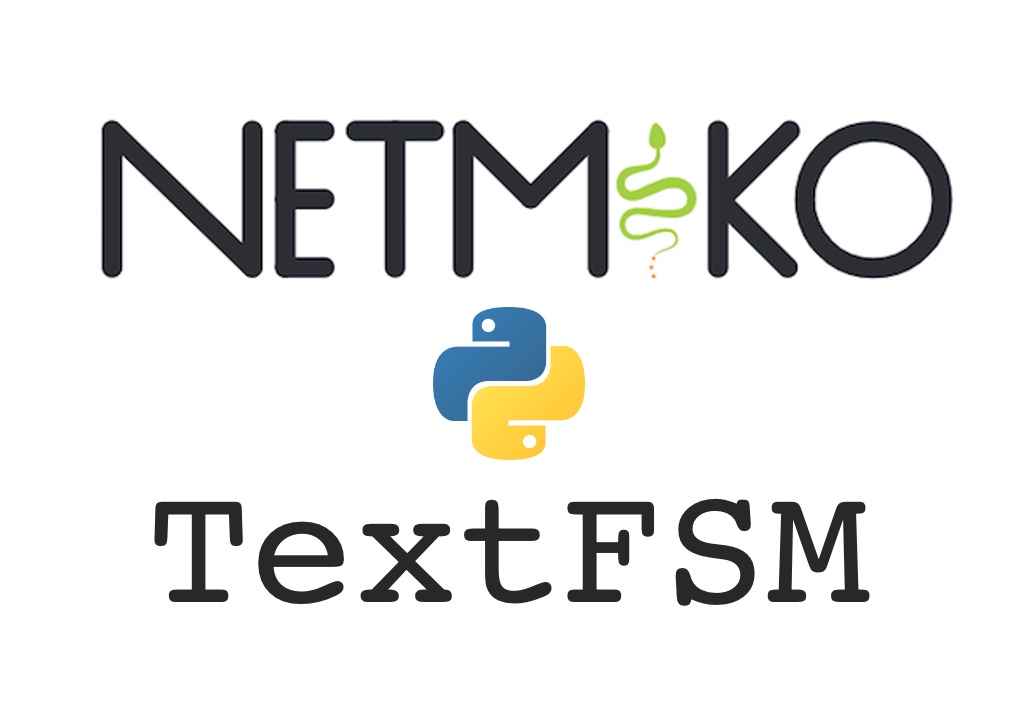How to get a serial number - Netmiko and Text FSM

Recently, I got a query from a Customer: how could I easily collect my device(s) serial number?
At first, the question sounded silly: you could just do show inventory all on any IOS XR platform to get the platform serial number. What if you need to retrieve an information 100 times per day? What if you need get this information on 100 devices at once? The goal of this new series of article is to explain different ways to collect a serial number on a device. If you can do it with a serial number, you can do it with anything else!
Introduction
In this second episode, we are going to use Netmiko and TextFSM. The logic will be very similar to what we saw on episode 1. Netmiko will be used to handle device connection and to interact with our device (i.e. connect to the device, send a show command, retrieve the output, disconnect from the device). Netmiko will retrieve our output as a very long string, without any parsing. It’s our job to parse the output to extract the information we need. For this, we will leverage TextFSM.
The code for this series of posts will be published here.
Netmiko
Netmiko is a multi-vendor Python library to simplify CLI connections to network devices. It is used to interact with devices: connect, send commands, retrieve outputs and disconnect from the device. It’s using Paramiko under the hood, a Python implementation of the SSHv2 protocol.
You can find the Github repo of the Netmiko project here.
You can find the documentation of the Paramiko project here.
TextFSM
TextFSM is a Google project. It’s a Python module developped to help Network Engineers to parse semi-formatted text (i.e. for a human it looks nice and structured, but for a machine it looks like a very long string). The engine takes two inputs: a template file and a text input (such as a CLI output from an IOS XR device). It will return a list of records, containing the data extracted from the text input.
You can find the Github repo of the TextFSM project here.
Other “How to get a serial number” episodes
You’ve missed an episode? You would like to read more? Below the list of published episodes:
| Episode | URL | What’s covered |
|---|---|---|
| 1 - pyATS | Link | Using pyATS to get a serial number on a given IOS XR device |
| 2 - Netmiko and Text FSM | Link | Using Netmiko and Text FSM to get a serial number on a given IOS XR device |
Using the Devnet sandbox
In order for everyone to be able to run the code, we will use the IOS XR always-on sandbox on Cisco Devnet. Below the sandbox information.
| Key | Value |
|---|---|
| IOS XRv 9000 host | sandbox-iosxr-1.cisco.com |
| SSH Port | 22 |
| NETCONF port | 830 |
| Username | admin |
| Password | C1sco12345 |
Collecting the serial number using CLI
To make sure we are all on the same page, below is the command to collect the serial number with CLI on an IOS XR device and a sample output. In this case, the answer we want to get is SN: 8F21767F3A3.
Getting your hands dirty – Collecting the serial number using Netmiko and Text FSM
Enough talking, let’s code!

How to enable Netmiko and Text FSM on your IOS XR device?
Netmiko supports various protocols to connect to your device, such as telnet or ssh. TextFSM will not interact with your device; meaning there is no specific requirement for your device to support TextFSM.
SSH is the recommended administration protocol for modern operations.
In other words, you just need to make sure you have an account with read rights, which can connects using ssh. You can enable SSH on IOS XR with the command ssh server v2.
Testbed definition
TODO To be updated with the Python code Yes we could also import a yaml file.
The simplest way to connect to a device is through a pyATS testbed file, written in YAML. This information will be used by Unicon to connect to the device and send the requested commands.
You can find the complete documentation on how to build a testbed here.
In a nutshell, we need to specify how to connect to our device:
IP addressorURL,Credentials,Type, the Network Operating System of our device, in our case IOS XR,Protocol, how to connect to our device, in our case SSH on port 22.
Our testbed look like the below example:
Testbed definition has been covered in more details in this post.
Leveraging Netmiko to connect to the IOS XR Sandbox
TODO
Leveraging Text FSM to parse the output
TODO
Using Python to get the value of a specific key
TODO Does it need to be updated?
In Python, you can see a Dicitonary as a set of key: value pairs. For example: { "name": "IOS-XR1", "version": "7.4.2"}.
In my_dict, in order to retrieve my_value associated with a specific my_key, you should use my_value = my_dict['my_key'].
A value can be a dictionary. In this case, we call it a nested dictionary. In our example, the key "module_name" is associated with a dictionary. In our pyATS output, we have multiple nested dictionaries.
Dictionary keys are case sensitive!
In our case, the code to get the Serial Number out of the parsed output should look something like: serial_number = my_output["module_name"]["Rack 0"]["sn"].
You can read more about Python dictionaries in the official documentation.
Bringing it all together
TODO Change ref to the rigth script
This is what the full script looks like.
- We load the testbed to extact device information,
- We connect to the device,
- We collect the CLI output and we parse it using pyATS librairies,
- We extract the device number from the nested dictionaries,
- We disconnect from the device.
You can find all supported pyATS parsers in the documentation.
Netmiko and Text FSM pros and cons to retrieve a serial number
This last section reflects my own experience. Based on your own use of Netmiko and Text FSM, it might vary. Feel free to comment if you disagree or if you think about something else.
Pros
TODO
- pyATS uses SSH as transport, which is most of the time open on the device.
- You can extract the serial number with very basic Python knowledge and in less than 10 lines of code.
- pyATS has great documentation and a very active community.
Cons
TODO
- pyATS is great to retrieve this information once. You might have better tools if you need to retrieve an information periodically (ex: interface CRC errors, once per day).
- If you use another Network Operating System, the parser might not exist yet. It might take many more lines of code to extact what you need using text parsing tools like Text FSM.
- What if the CLI changes and the parser is not valid anymore?
Conclusion
TODO
pyATS is a great tool to retrieve a serial number: we were able to achieve our goal in less than 10 lines of Python.
In the next episode, we will see how to get a serial number using NETCONF.
Resources
TODO
Below a few useful pyATS resources.
Leave a Comment